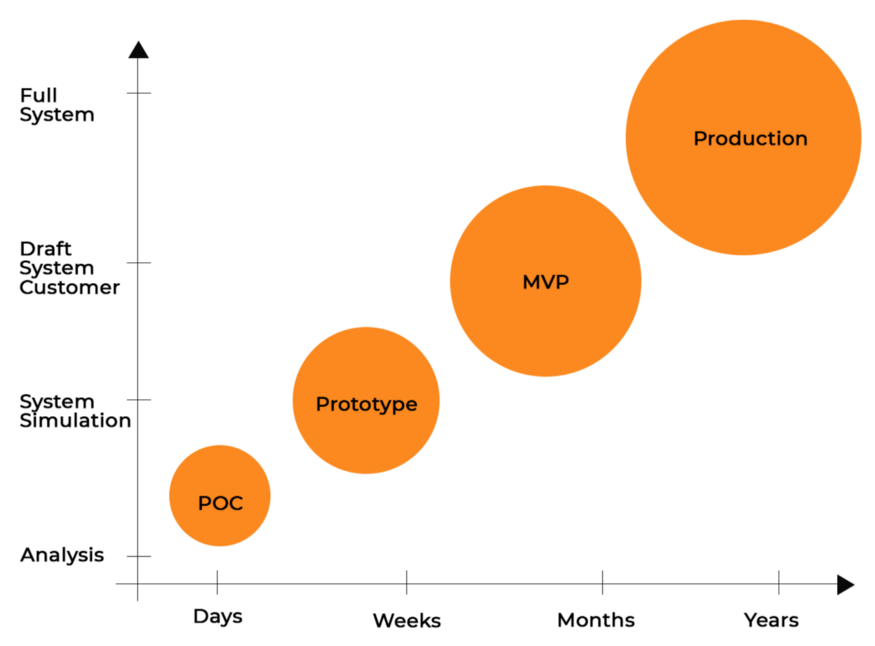Proof of concept -- 可行性验证
https://en.wikipedia.org/wiki/Proof_of_concept
Proof of concept (POC), also known as proof of principle, is a realization of a certain method or idea in order to demonstrate its feasibility,[1] or a demonstration in principle with the aim of verifying that some concept or theory has practical potential. A proof of concept is usually small and may or may not be complete.
These collaborative trials aim to test feasibility of business concepts and proposals to solve business problems and accelerate business innovation goals.[2]
https://asperbrothers.com/blog/proof-of-concept/
What is the Proof of Concept in Software Development?
Let’s start from scratch; that is from the definition. Merriam-Webster dictionary defines PoC as follows:
something that demonstrates the feasibility of a concept (such as a product idea or a business plan)
In fact, in software development, PoC’s job is to demonstrate the feasibility of both a product idea and a business plan connected with it. When done correctly, PoC development is the best way to avoid costly mistakes and attract investors. We will write more about it in the following sections.
From Concept to Product
https://asperbrothers.com/blog/proof-of-concept/
The Stages in Product Development

Even if you believe strongly in your idea and think you know its final shape, slow down. Developing your application according to the diagram above will help you avoid costly mistakes.
https://www.ulam.io/blog/poc-prototype-and-mvp-differences/
Proof of Concept (POC) in software development
验证是否可实现。
POC for a betting system (assuming that user numbers will be in the millions) could be to check if the team could build a micro-service that could handle 1000 orders per second. Proof of Concept’s intention is to show that a product concept can be developed and will be functional. Depending on the project a POC can be something as simple as a survey to test out an idea, a Kickstarter campaign to see if an idea generates interest, or even a film on youtube to see if the idea is popular.
Prototype in software development
演示如何工作。
The Prototype stage is when you have a product that has some completed key aspects and others that are merely improvised. The purpose of this stage is to demonstrate how the product will work when it is finished. Josh Wexler, head of product at Yieldmo, said that “Prototypes are visions of the future — some way of being able to see and experience the future of an idea [where doing so in words would fall short].”
Minimum Viable Product (MVP)
对于早期用户,实现最小可用功能。
A Minimum Viable Product (MVP) involves the minimum amount of work and the least functionality required to take the product to market. MVPs are completed to either check audience response or simply check your assumptions. They are often created in order to launch quickly and generate the user feedback needed to perfect the project. In other words, an MVP has just enough features to satisfy early customers. We covered the basic information on MVP development in our blogpost: Why and how you should build a Minimum Viable Product (MVP)
Full product
对于所有用户,都可以满足需求。
As your product grows from an MVP into a Full Product it will attract more and more users. You will need to respond to the increasingly sophisticated user requirements that come with increased traffic. This stage is never finished as products have to constantly be updated to adapt to the changing world.